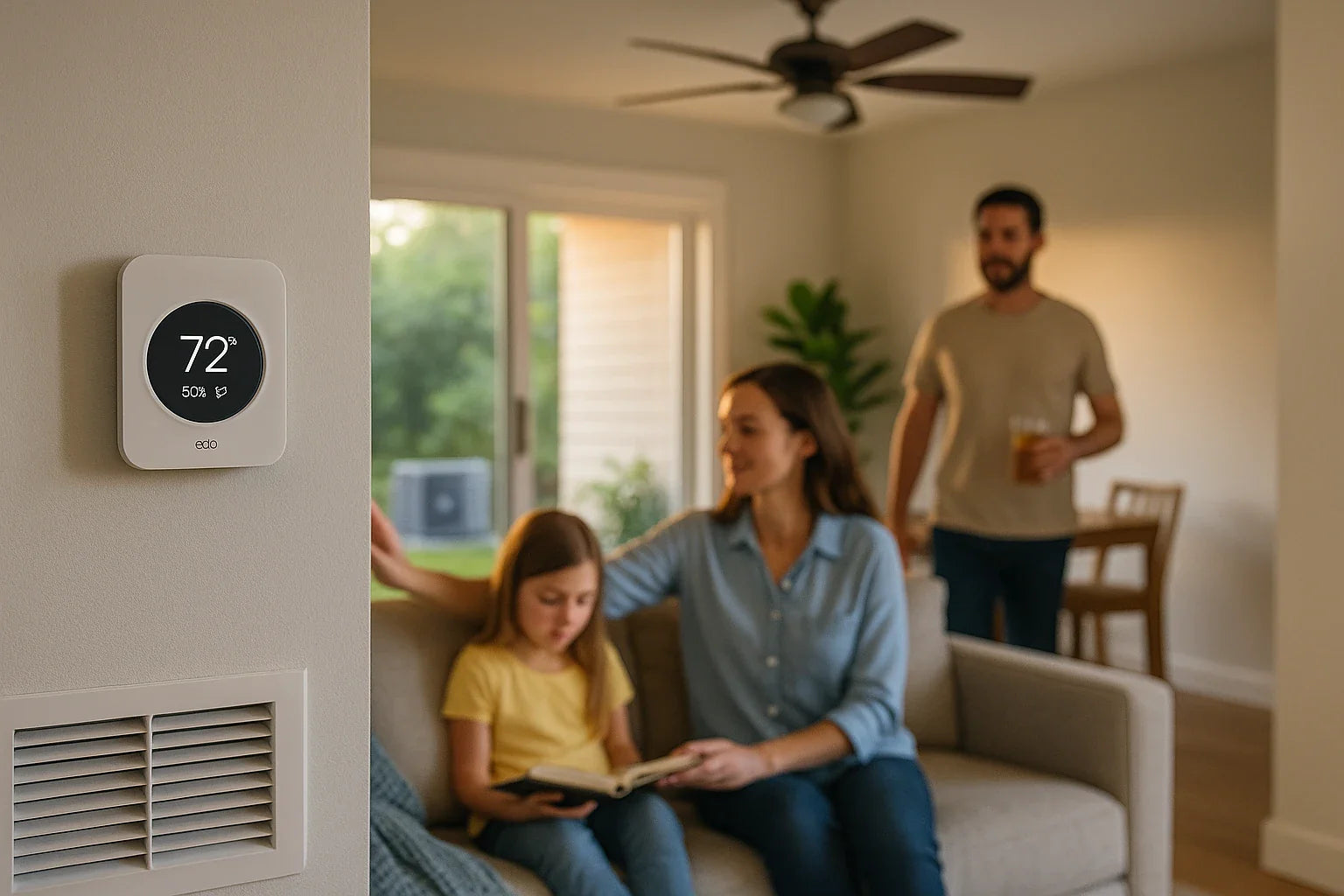A Sticky Summer Evening in Zone 3A
Picture dinner time. The kids dart between the living room and the porch, and every surface feels damp. You nudge the thermostat two degrees lower, but the air still hangs heavy. Many Zone 3A homeowners know this scene. It happens when a heat pump is sized by “rule of thumb,” not by science. The good news? A properly sized, variable-capacity unit keeps humidity below 55 % and slashes energy bills. Today, we’ll walk through the exact steps pros use—without burying you in jargon—and show how The Furnace Outlet backs each step with wholesale pricing and honest, licensed-tech support.
Why Heat-Pump Sizing Starts With Manual J, Not Guesswork
Manual J calculations consider insulation, window orientation, leaks, and more. Skipping this step is like buying shoes by eyeballing the box. ACCA’s Manual J v8 remains the industry gold standard, ensuring the system meets both cooling and heating loads without oversizing.(www1.eere.energy.gov) Our licensed techs at the Help Center run Manual J for customers every day—free—because dialed-in loads save you from short-cycling headaches later.
Cooling Load Rules in Humid Summers—Here’s Why
In Zone 3A, muggy summers trump mild winters. The sizing target is the design cooling load because moisture removal hinges on steady run-times at low fan speed. Energy-agency research shows right-sized systems beat oversize ones on indoor humidity and comfort.(www1.eere.energy.gov) Once the cooling number is set, we verify the chosen model’s heating capacity still covers 95 % of winter hours.
Variable-Capacity Units: The Secret to Taming Humidity
Single-stage units blast cold air, then shut off—leaving latent moisture behind. Variable-capacity heat pumps throttle between ~30 % and 100 % output, stretching run-time and wringing out humidity. Studies prove longer, lower-speed cycles cut RH by up to 10 percentage points.(www1.eere.energy.gov) Browse our R-32 heat-pump systems for models with 5-to-1 turn-down ratios and built-in dehumidification modes.
Heating Load Still Matters on Chilly Mornings
Yes, winters are mild, but 38 °F mornings happen. Your heat pump must carry the full load without electric strips kicking in every dawn. We check manufacturer data at 35 °F to confirm capacity covers at least 90 % of the Manual J heating figure. The remaining 10 % can come from backup heat or a dual-fuel setup like our R-32 packaged dual-fuel units.
Understanding Balance Point Temperature and Backup Heat
The balance point is the outdoor temp where heat output matches the home’s demand. In Zone 3A, that’s often 32–40 °F.(aceee.org) Below it, auxiliary heat engages. Smart thermostats can lock out strips until absolutely needed, protecting your wallet. Our Design Center team programs these lockouts during commissioning calls—no extra charge.
Using Manufacturer Performance Data Without Getting Lost
Every good spec sheet lists capacity at 95 °F (cooling) and 47 °F / 17 °F (heating). Match these numbers against your load worksheet, not against raw tonnage. If the 95 °F cooling capacity falls within ±15 % of the load, you’re golden.(www1.eere.energy.gov) Need help decoding tables? Upload photos through our Quote-by-Photo service and a tech will mark the correct line on the sheet.
Common Sizing Myths That Cost You Comfort
-
“Bigger is always better.” Oversize units short-cycle and leave sticky air.
-
“Square footage predicts tonnage.” Two 2,000 ft² homes can differ by a full ton after insulation upgrades.
-
“Heat pumps can’t heat in winter.” Modern R-32 units deliver full output down to 25 °F.
-
“DIY means guess-and-ghost.” Our DIY ductless mini-splits come with load-calc support and line-set kits, so you’re never on your own.
9. Quick Table: Sizing Steps for DIYers
|
Step |
Action |
Helpful Outlet Link |
|
1 |
Run Manual J |
|
|
2 |
Pick variable-capacity model |
|
|
3 |
Order matched line set |
|
|
4 |
Verify performance tables |
|
|
5 |
Schedule phone walk-through |
How The Furnace Outlet Makes Pro-Level Sizing Easy
We sell direct, so you pay what contractors pay—shipping is free and fast. But savings mean nothing if the system is wrong. That’s why our licensed techs review every order before it ships. They’ll even recommend a $15 attic-deck sealer instead of a new system if that fixes your issue. Need equipment tomorrow? Selected package units leave the warehouse the same day. Honest guidance is our brand promise—ask our chat line anything.
Next Steps: From Load Calc to Click-to-Cart Savings
Ready to move? Gather window counts, insulation levels, and floor plans. Use our online Manual J calculator in the Sizing Guide. Send the PDF to our techs; they’ll reply with three matched-system options, including budget and premium picks. Place the order, track free shipping, and follow our DIY install videos. The whole process usually takes less than a week—no sales pressure, just data-backed advice.
FAQ: Rapid-Fire Answers to Homeowner Questions
How often should a right-sized heat pump cycle in summer? About 20-minute cycles in peak heat, more in mild weather. Long cycles equal better humidity control.(The Department of Energy's Energy.gov)
Will variable-capacity units run all day? They modulate down, sipping watts while holding setpoint.
Can I oversize slightly for future room additions? Only if you choose a model with a wide turn-down ratio. Otherwise, stick to the present load and upgrade later.
Do I need a new thermostat? Most modern variable units ship with proprietary controls; we include them in every air-handler bundle.
What about incentives? Check Energy.gov’s rebate map and DSIRE for local programs.







